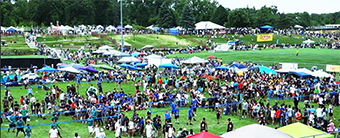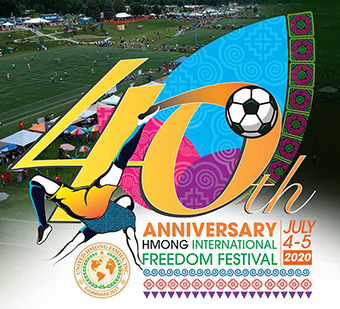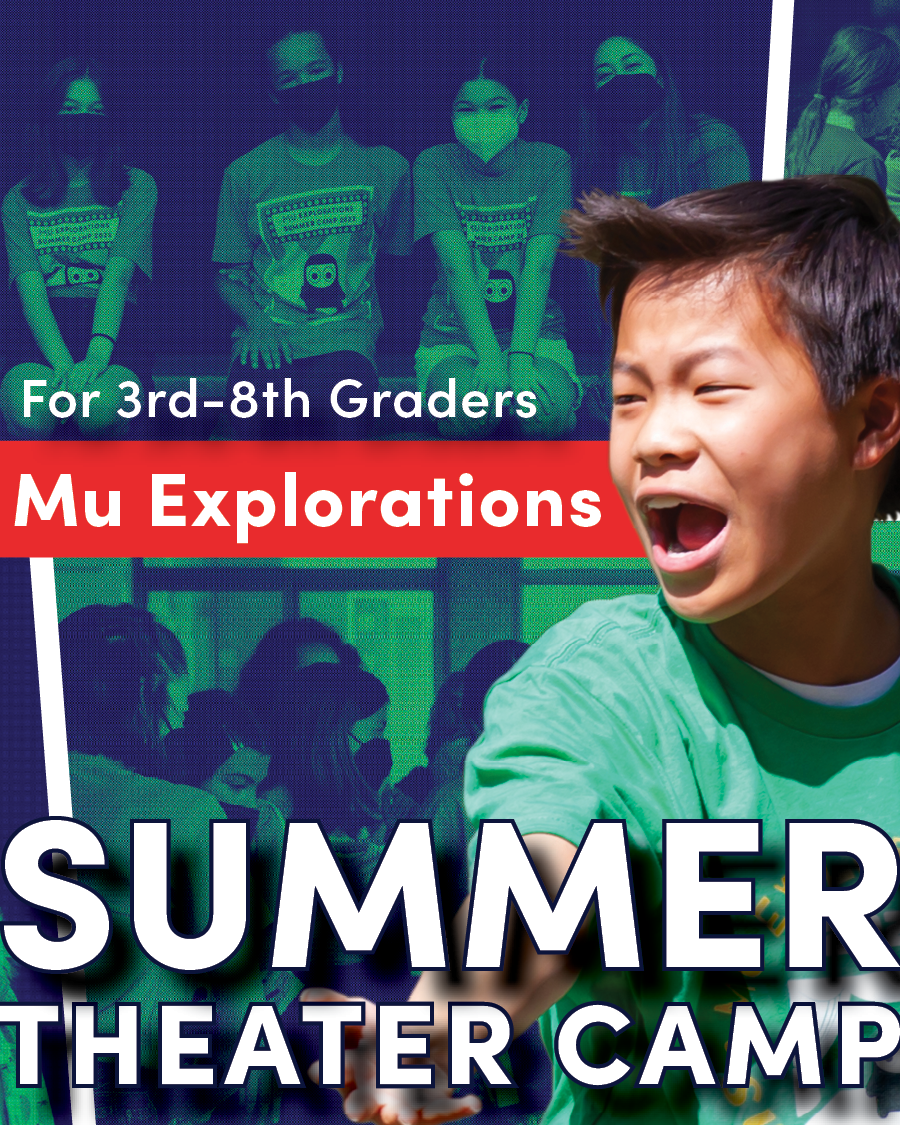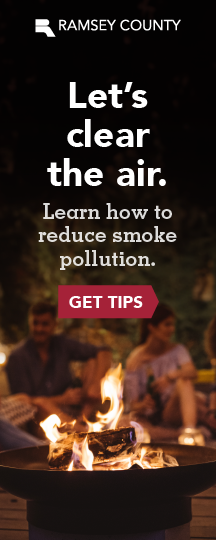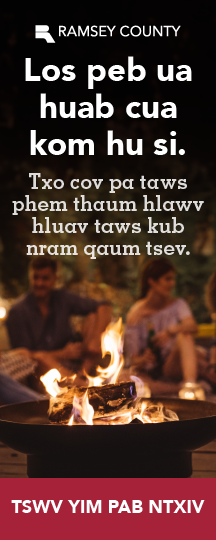This July 4th 2020 weekend, the McMurray fields of St. Paul will remain bare as the United Hmong Family, Inc.’s decision to cancel the 40th annual Hmong International Freedom Festival holds strong. This is just one more thing that the COVID-19 pandemic has taken from people, and hits not only its attendees hard but also sports (soccer, football, volleyball, tujlub, takraw) players and enthusiasts, food vendors, Hmong media productions and solo artists, as well as local Hmong entrepreneurs, farmers, and crafters.
A look back in time when Minnesota’s summer sun breathed hot onto the forearms of the J4 festival’s Hmong-American attendees with much vigor, these were the good, old days. People were happy to be out in the unforgiving heat, well-dressed couples with their floral umbrellas in hand, walking closely together under its shade while others, young and old, sport tank and tube tops, going full blast under the heat of the sun. People parked miles away and walked to the McMurray entrance where tickets are sold, in recent years, around $7. There was much to see, much to do, and much to eat. Families and friends scheduled meetups at the J4, many who often traveled from out-of-state. Some single bachelors even courted young maidens that they found attractive, because at the J4, people dressed their summer’s best. J4 presented a great opportunity for the Hmong community and many other communities that enjoyed the scene. It was like a Hmong New Year’s celebration, but amped up; there was the added “outdoor” aspect, some Minnesota mosquitos, no traditional Hmong wear of course (although some have been spotted to don such attire for funsies), more food and dessert varieties, more merchandise for a more wide shopping experience, sports action, likewise intriguing stage competitions, and a special ribbon cutting ceremony by appointed community leaders. J4 was a time for business people, from realtors, health professionals, and car salesmen to Hmong media sources, artists and authors, to set up tables and market themselves.
Hmong media has seen the greatest growth. Not but ten years ago prior to the rise of popularity in NetFlix and AmazonPrime video, there was a market for Hmong-dubbed foreign movies, ranging from descents of Thai, Korean, Chinese, and Taiwanese among others. Hmong entrepreneurs in the dubbing profession traveled as far as California, Wisconsin, and the Carolinas to Minnesota, each lugging suitcases and large cardboard boxes of VHS tapes and burned DVD’s with full glossy print color covers featuring the Thai or Korean actors on the front with a self-branded Hmong title. An epitome of Hmong New Year celebrations and annual festivals were these dubbed films. The market was hot in the day; so hot that such sales had to extend to local Hmong grocery stores and Hmong open shopping centers throughout the year.
On J4 memory lane, large black speakers were set up to the sound of newly dubbed Thai lakorns and K-dramas, new Hmong movies that were premiering that summer, sometimes also featuring Hmong-Laos actors that were sponsored to market the movie that year, and Hmong bands with new and old albums from genres of hip-hop and rap to classical, religious, and folk Hmong music. Autographs were given, photos taken. Culture, music, and fun are experienced at the J4.
The information age has definitely brought change onto the Hmong music industry and its impact is also felt on J4 grounds. New Hmong artists debut here and there, though, likely online and on YouTube first before ever hitting the J4 sales floor. Taking a walk down J4’s grassy media lane where all the artists line up in zig-zag rows, each with an enlarged poster print of either a self-glamour shot or an album cover to market their album, we see a difference compared to a decade’s ago time.
Changes expand to its food market. J4 has definitely become “younger” adding to its food and snack menu vendors of trendy food options, such as dragon’s breath balls, ice cream rolls, and Asian street skewer foods, to name a few. As Boba fever hits and grew in popularity in Minnesota over the past decade, J4 attendees can expect to see a Boba tea vendor within every 20 feet, which is marvelous thing for the Boba fan and the local drink seller who aims to make a few bucks within the two festival days. Thus, an influx of young people has definitely prevailed in the most recent years.
On the brighter and more grounded side of things, it is also the case that some things have continued unwavering and without much change. We can always depend on the energetic crowd for the sporting tournaments. Scenes of family and friends carrying ice chests filled with ice and cold drinks are forever ingrained in our vision and our hearts, as said chests are placed on the sidelines of the field, kids and adults alike sitting atop them and even on the ground, each team cheering their own with passionate voices.
Engines and power sources roar in the red, sandy open areas where baseball should be played, and the local ice cream and cold drink vendor stands but four feet above the crowd, accepting crumpled dollar bills from a kid and his friend while fulfilling their ice cream or cold drink orders. And of course, who can forget the popular and never-old mango slices with pepper flakes, salt, and the fish sauce (per one’s liking). This snack is one which was popularized to Hmong Minnesotans in the early millennium. Teenagers and kids couldn’t wait for J4 to happen simply so they can expend $2 for a cup of this green, crunchy, and sour mango goodness, a food mainly appointed for pregnant Hmong ladies back in the day but now is widely consumed by all. And if that isn’t enough, the Hmong food and Hmong cuisine will always and have remain the same. In the uphill rise, safe from airborne soccer balls and the occasional flying shoe, the food venders reside. Hmong food has not changed but additions have been made to improve the cuisine. It is always the case that one can rely on the availability of a foam takeout tray containing purple sticky rice, Hmong sausage sliced diagonally to share, and whole grilled, herbed fish wrapped in a banana leaf. Papaya salad will be there, always. And Yeo’s Soymilk and FOCO coconut drinks with pulp are too a reliable comfort that will remain at J4, in our memory, in our hearts, and though not long, in our bellies.
So much of the beloved J4 has changed, but many things also remain. This is a reminder that nothing in life is guaranteed to stay and so is nothing is guaranteed to leave us. Life, a moving force with its own agenda, will keep on keeping with us, Hmong, American, Black American, Asian American or global citizens. Remembering what was and what is and seeing and acknowledging what can be is perhaps an act that can help us grow with change. The J4 Freedom Festival has withstood changes and has held strong. And you can, too.
Thank you for being awesome! See you next year for the J4 Freedom Festival of 2021.
For more information regarding future J4 events:
